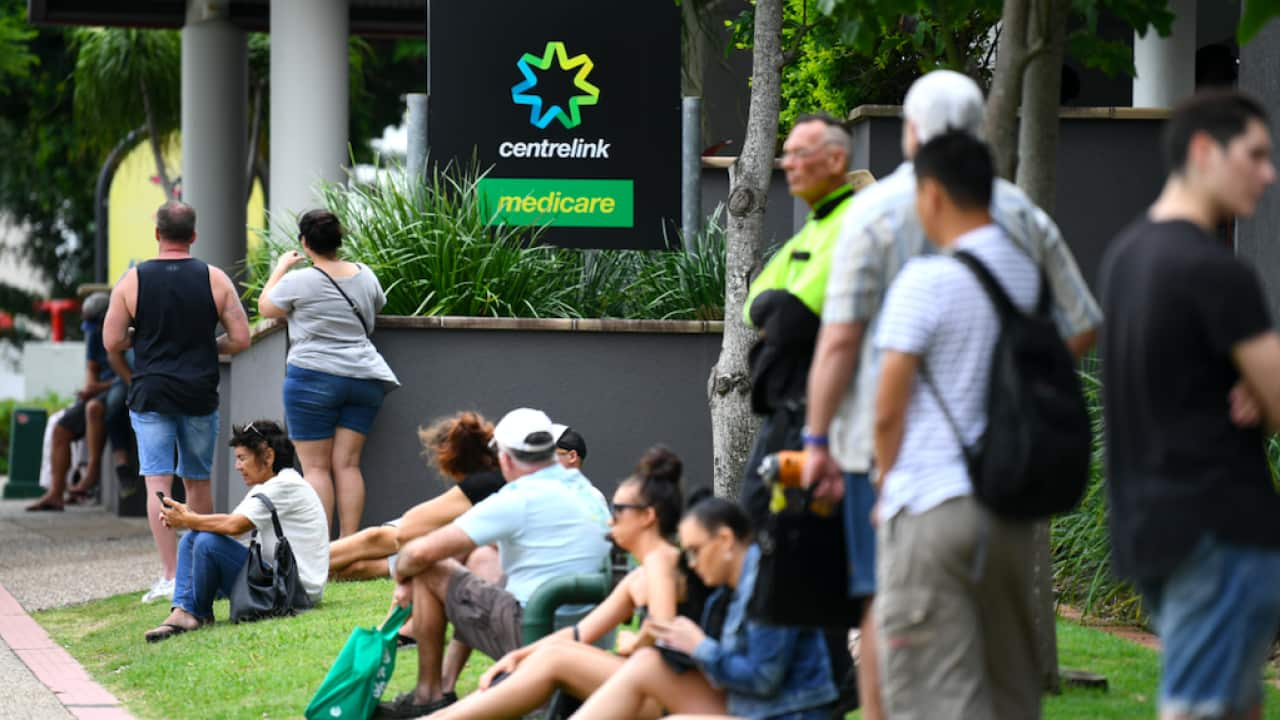JobKeeper and JobSeeker are set to be extended beyond their September deadline, but will be paid at a lower rate and face stricter eligibility tests.
Prime Minister Scott Morrison and Treasurer Josh Frydenberg will announce the future of the wage subsidy program and the $550 coronavirus supplement in Canberra on Tuesday, ahead of Thursday's July Economic and Fiscal Update.
But SBS News understands the payments will continue at their current rates until their 27 September deadline, before moving into another phase of support set in place until the end of March.
The payments will be paid at a lower level with their eligibility criteria also amended to ensure support only goes to those the government considers still require assistance.
This will include JobKeeper being adapted to a new two-tiered payment system to more closely reflect the incomes of employees who previously worked fewer hours.
The government has been considering how to adapt the program to ensure businesses and employees still requiring support receive it in the worst-hit sectors.
The decision comes following a review of the programs by Treasury, examining income support rolled out during the pandemic.
A surge in coronavirus cases in Victoria and recent clusters in NSW have emphasised the persistent challenges faced by many businesses.
The ongoing rate after March next year will be determined in this year's October budget.
Mr Frydenberg insists support will continue for the neediest.
"JobKeeper has been an economic lifeline to millions of Australians and that lifeline will be extended for those businesses that need it most," he said.
Businesses accessing JobKeeper will have to requalify through a test measuring turnover decline. Under the old criteria, most businesses had to prove a 30 per cent fall in revenue.
Finance Minister Mathias Cormann said the elevated payments had created "distortions" but were necessary due to the scale of job losses.
"This support was necessary, we will continue to provide it for a further period, but ultimately this is not something we can continue to do on an ongoing basis," he told reporters.
In the face of an anticipated sharp jump in unemployment, the federal government introduced the wage subsidy at a flat rate of $1,500 a fortnight. It also doubled the JobSeeker payment to around $1,100.
The payments have been the cornerstone of the government's economic response aimed at shielding Australians through the coronavirus pandemic.
The unemployment rate has already jumped to a 22-year high of 7.4 per cent and is set to go even higher.
There are now 992,000 people officially unemployed, surpassing the 960,000 record set in December 1992.
But the jobless rate would be almost 12 per cent but for the exclusion of 230,000 people who were considered employed in June, but did not work one hour as they are being supported by the government's JobKeeper program.
It's estimated JobKeeper has kept around 3.5 million Australians in work since being announced in March, while around 1.6 million are currently receiving JobSeeker payments.
The opposition has criticised aspects of the JobKeeper wage subsidy, including for excluding an estimated one million casuals, who had been employed for less than 12 months with one employer.
Treasury's review also suggested the enhanced JobSeeker payment may be affecting incentives to work.

Leader of the Opposition Anthony Albanese. Source: AAP
But opposition leader Anthony Albanese rejected the idea the higher payment was leading to people avoiding work, saying there were 13 people out of work for every job vacancy.
"I don't think this is the time for the government to essentially be running out the dole bludger argument which is so dear to the heart of conservative governments," he said.
Economist Stephen Koukoulas told SBS News the government was right to consider tweaking the program, but must ensure businesses and employees still needing support receive it.
"The economy is still in a lot of trouble, we are still a long way from any recovery at all to be blunt," he said.
"I would like to see still a very generous treatment of the JobKeeper program that those businesses and those people that need it - definitely get it.
"But I can understand why they want to hone it in a little bit and just target it a little more specifically."

Prime Minister Scott Morrison said the government is rolling out a "series of phases" of support. Source: AAP
Prime Minister Morrison on Monday said the "next phase" of targeted support was needed to continue to minimise the impact of COVID-19.
"It is hard to say how many phases there will be because there are so many uncertainties with COVID-19," he said.
Economic modelling has suggested over half million Australians would be thrown into poverty if the JobSeeker dole payment returned to pre-COVID-19 pandemic level of $40 a day.
The progressive think tank The Australia Institute estimated it would push more than 650,000 Australians into recession, including 120,000 children aged under 14.
The decision to extend JobKeeper and JobSeeker schemes comes after months of pressure from industry groups and the Australian Council of Trade Unions warning against support measures "falling off a cliff" in September.
Australian Council of Social Services CEO Cassandra Goldie told SBS News the social security payment needed to remain available at an increased level for those that need it.
"This is a crucial lifeline payment for people we need to make sure that anybody who needs it is getting it," she said.
"It is clear that we cannot go back to that brutal $40 a day by people affected by this massive job loss situation."
There has been widespread calls for some time for the dole payment to be increased from its pre-pandemic level of $40 a day, including from the Business Council of Australia, ACOSS, Deloitte Access Economics, the Reserve Bank, as well as from Labor and the Greens.
With AAP




